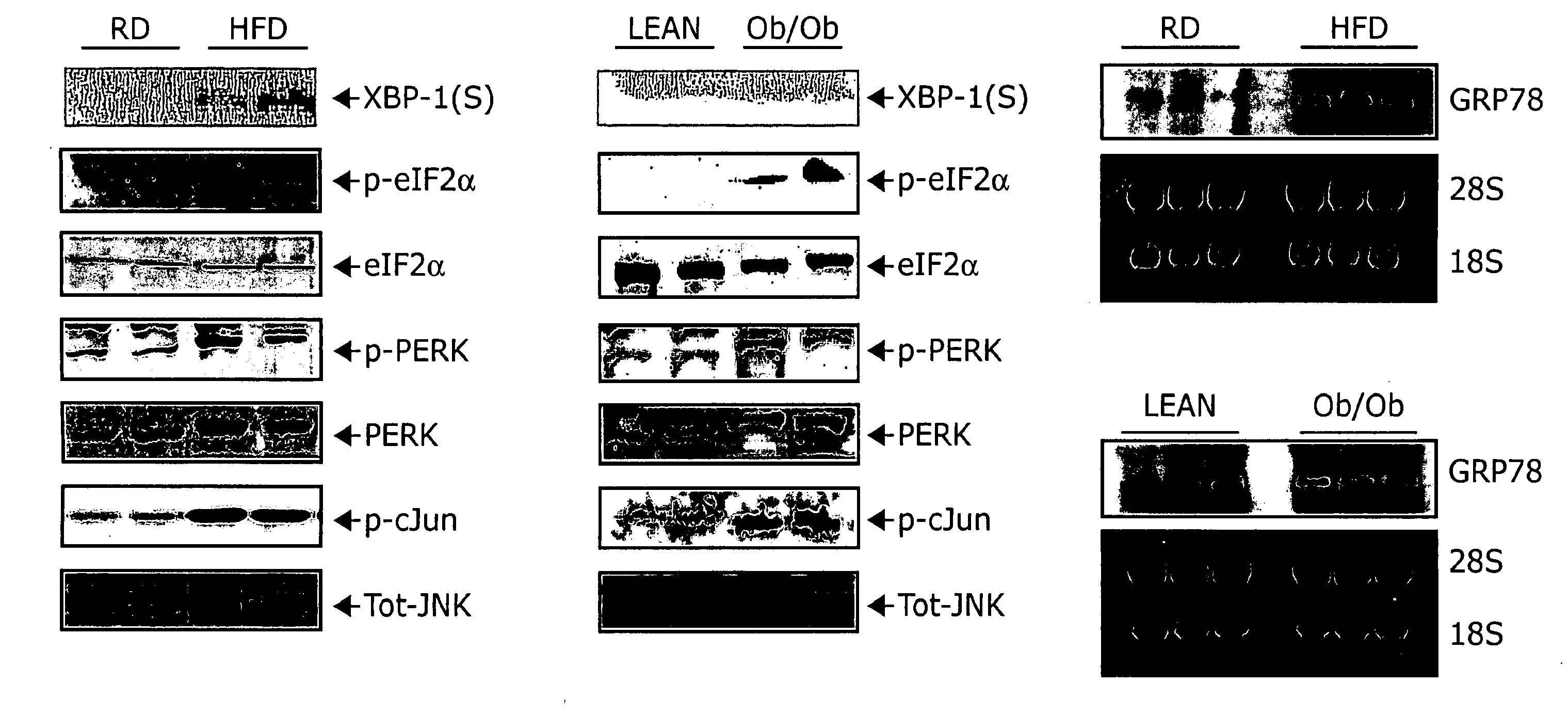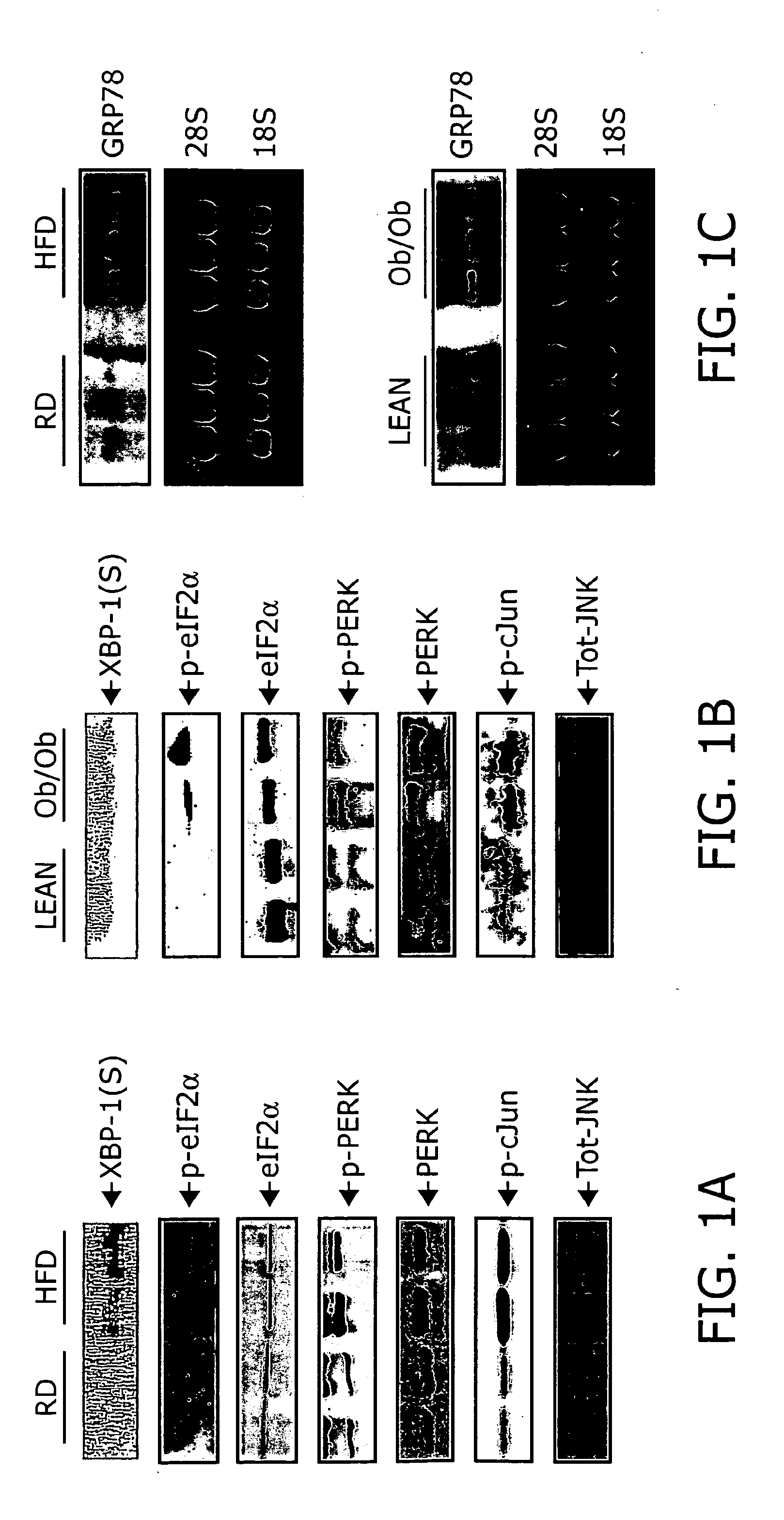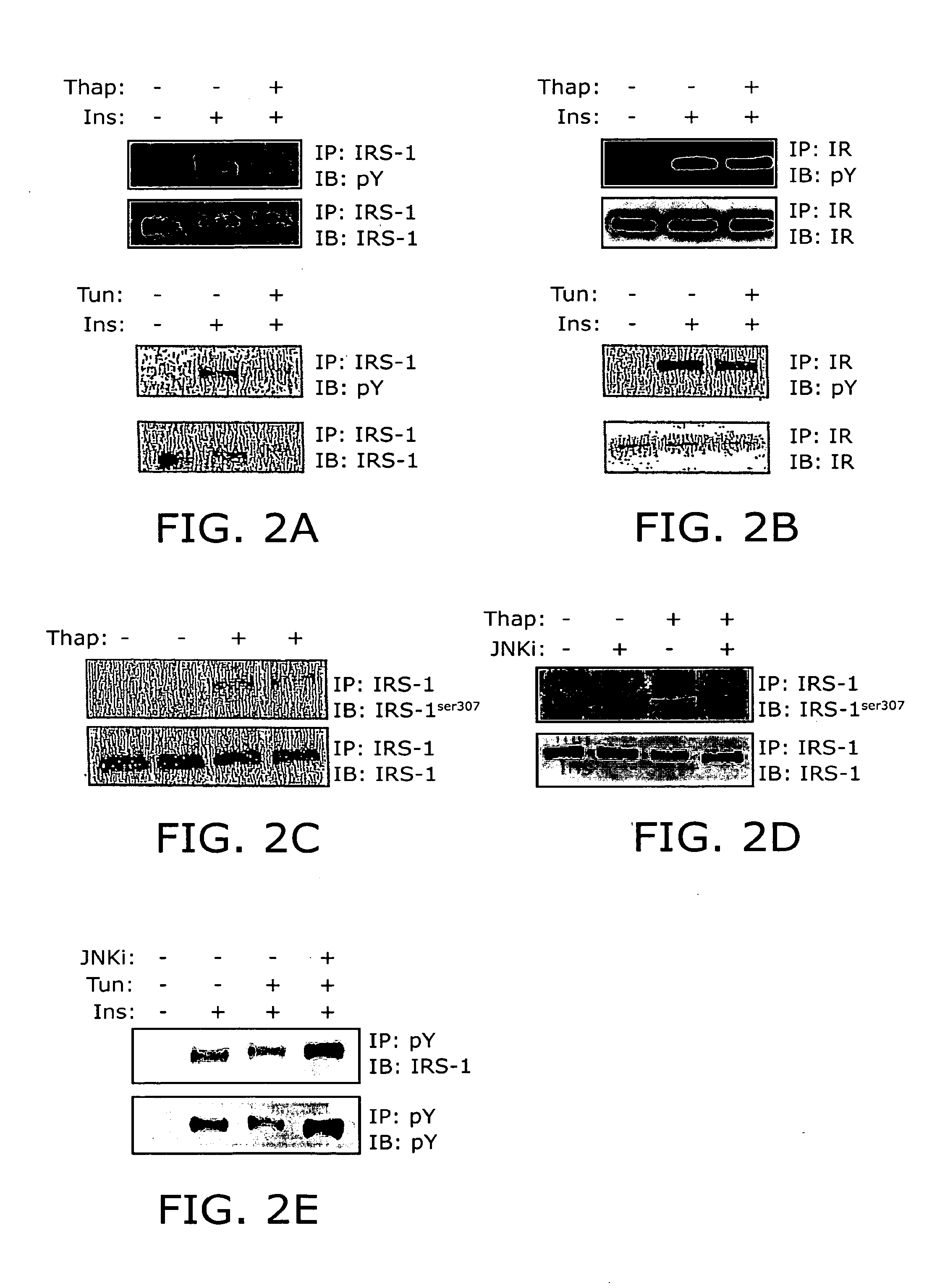Reducing er stress in the treatment of obesity and diabetes
- Summary
- Abstract
- Description
- Claims
- Application Information
AI Technical Summary
Benefits of technology
Problems solved by technology
Method used
Image
Examples
example 1
Endoplasmic Reticulum Stress Links Obesity, Insulin Action, and Type 2 Diabetes
Results
Induction of ER Stress in Obesity
[0087]To examine whether ER stress is increased in obesity, we investigated the expression patterns of several molecular indicators of ER stress in dietary (high fat diet-induced) and genetic (ob / ob) models of murine obesity. The pancreatic ER kinase or PKR like kinase (PERK) is an ER transmembrane protein kinase that phosphorylates the α subunit of translation initiation factor 2 (eIF2α) in response to ER stress (Shi et al., Mol. Cell. Biol. 18, 7499 (1998); Harding et al., Nature 397, 271 (Jan. 21, 1999); each of which is incorporated herein by reference). The phosphorylation status of PERK and eIF2α is therefore a key indicator of the presence of ER stress. We determined the phosphorylation status of PERK (Thr980) and eIF2α (Ser51) using phospho-specific antibodies. These experiments demonstrated increased PERK and eIF2α phosphorylation in liver extracts of obese...
PUM
| Property | Measurement | Unit |
|---|---|---|
| Frequency | aaaaa | aaaaa |
| Frequency | aaaaa | aaaaa |
| Frequency | aaaaa | aaaaa |
Abstract
Description
Claims
Application Information
 Login to View More
Login to View More - R&D
- Intellectual Property
- Life Sciences
- Materials
- Tech Scout
- Unparalleled Data Quality
- Higher Quality Content
- 60% Fewer Hallucinations
Browse by: Latest US Patents, China's latest patents, Technical Efficacy Thesaurus, Application Domain, Technology Topic, Popular Technical Reports.
© 2025 PatSnap. All rights reserved.Legal|Privacy policy|Modern Slavery Act Transparency Statement|Sitemap|About US| Contact US: help@patsnap.com



